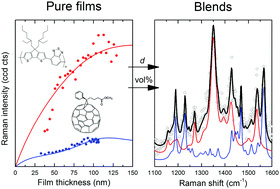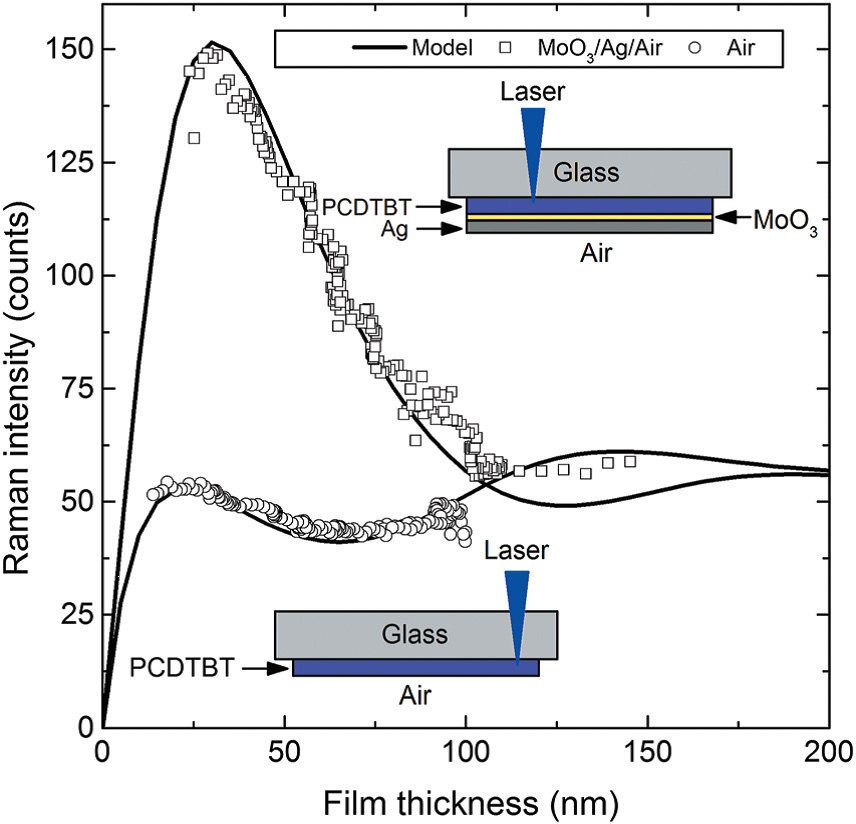Ever since the discover of the Raman effect in 1928, its use as a spectroscopic tool for the chemical identification of molecules has extended over a large variety of scientific disciplines from solid-state physics to biochemistry. The assignment is performed exploiting the distinctive vibrational signature of the molecule(s) under study, which can be unambiguously ascribed to single chemical species according to its molecular structure. In solid thin films, these features enable their rapid qualitative characterization by comparing the experimental spectra with reference libraries. Raman scattering, however, can also be used to infer quantitative information about such films, including thickness and relative volumetric composition. For that purpose we developed a methodology applicable to any Raman-active material deposited as a solid film, either supported or forming part of complex multi-layered structures. We describe the electromagnetic fields in the film taking into account their interference to properly reproduce the variations of the Raman intensity in films with lateral thickness gradients, allowing us to estimate effective solid-state Raman cross-sections to determine the relative volumetric composition of a blend, apart from the local film thickness, as sketched in Fig. 1.
Our work constitutes the first report in which Raman scattering is used to quantify film thickness and composition in multicomponent mixtures of materials deposited as thin films. This enables the imaging of thickness and composition with diffraction limited spatial resolution over areas from microns up to centimeters squared, thus bridging the two regimes currently addressed by other techniques (e.g. extremely local scanning probe microscopies and ellipsometry/SIMS for averaged values over larger areas). Furthermore, the methodology itself is not restricted to a particular type of material or film architecture but it can be applied in any thin film technology which includes Raman-active chromophores: single- or multilayered structures, free-standing or supported films, and organic or inorganic materials (see Fig. 2 for an example).
Reference

